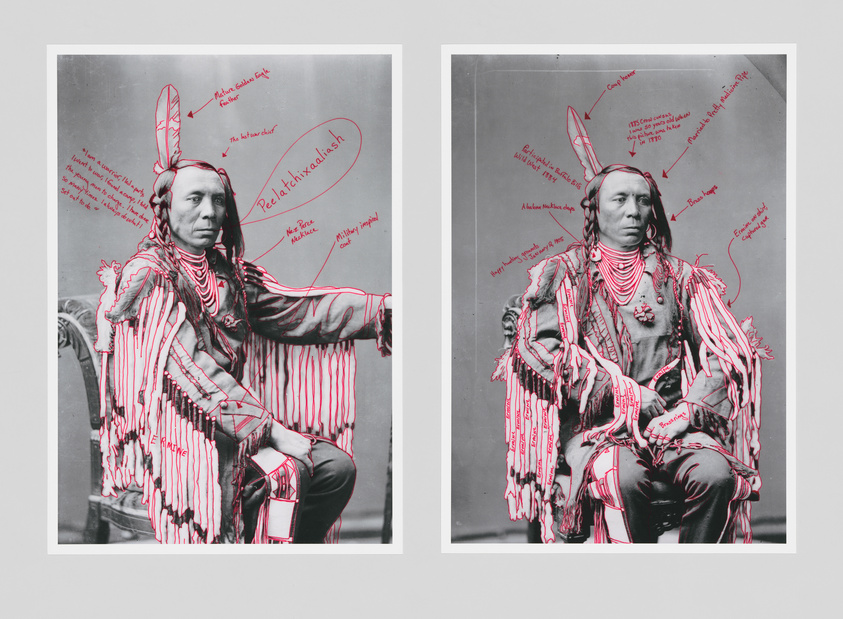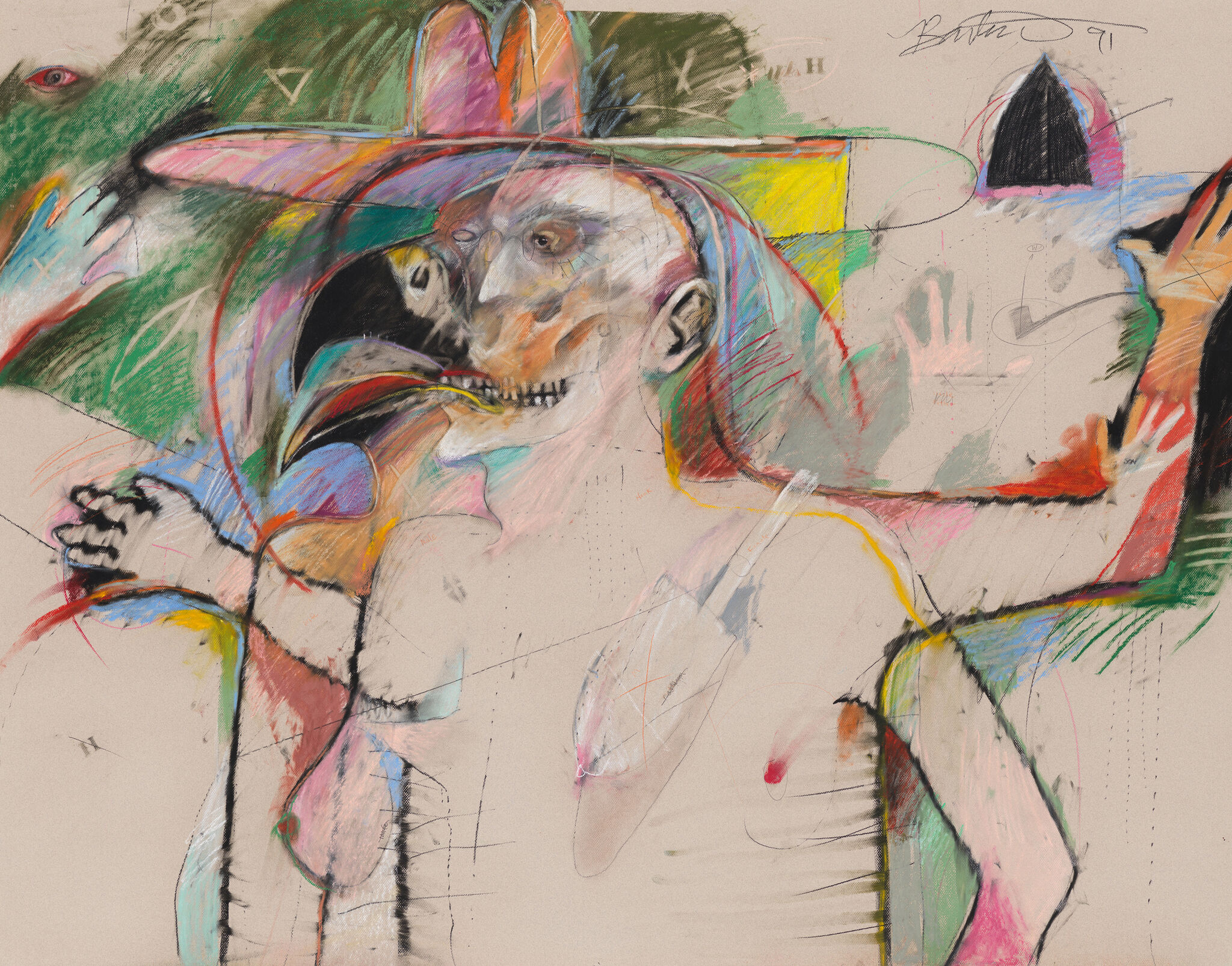Wendy Red Star, Déaxitchish / Pretty Eagle, 2014
Aug 20, 2024
0:00
Wendy Red Star, Déaxitchish / Pretty Eagle, 2014
0:00
Wendy Red Star: I was doing research on two images of Medicine Crow, and what I found was that they were delegation portraits taken in 1880. Medicine Crow and five other chiefs traveled to Washington, D.C. to meet with the president, discussing land and territory, and the Pacific Railroad was going to be placed through our territory.
From Montana, they had to take a wagon train with horses through the snow to Utah. From Utah, they went to Chicago. They actually became very ill, because this is the first time they’ve been around so many people. From Chicago, they were able to connect to Washington, D.C.
This trip—they actually spent several months in Washington, which is a tactic that the government liked to use for getting Native people to sign documents: make them homesick or just show them all your military, they’ll become afraid and realize they have no chance. But the fact that they brought all of their regalia shows that they knew that they needed to show their best to the president.
For me, the damage done to Indigenous people, the erasing of who they are, was very important to bring that back. As a Crow woman who grew up on the Crow Indian reservation, I am viewing these men as something totally different than a non-Native person or a non-Crow. It was really important for me to have them assert themselves like, “This is who I am. This is my name. I’m here to ensure the future generation of Crow people.”
Narrator: This interview was excerpted from a Smarthistory episode on this series. To hear more, check out smarthistory.org.
In What It Becomes.


